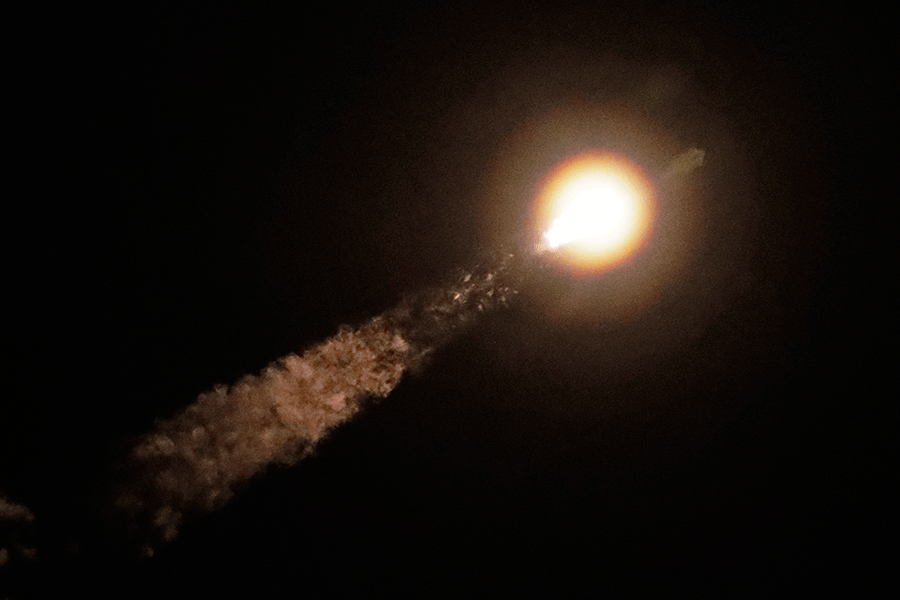NASA's fuel-less EmDrive thruster: Viable propulsion solution or sci fi?
Loading...
For several years, a small cohort of NASA researchers have been working on a rocket propulsion system that could someday take astronauts to Mars without using any fuel.
There’s just one problem: Their device appears to violate the laws of physics.
Several versions of the reaction-less “EmDrive” thruster have been produced in the last decade, each with varying degrees of functionality. Physicists have repeatedly dismissed these devices, since the fundamental concept breaks Newton’s Third Law of Motion: for every action, there is an equal and opposite reaction. But a new study from NASA’s Eagleworks Laboratories, which claims the device does work, has survived peer review – and that may bring an air of legitimacy to the research.
The paper, which was authored by NASA astrophysicists Harold “Sonny” White and Paul March, was published Thursday in the Journal of Propulsion and Power. It describes a closed copper chamber that, when loaded with microwaves, produces thrust in defiance of scientific explanation. The peer review doesn’t confirm that result – only that the researchers’ methodology was sound.
An early version of this device was produced by British researcher Roger Shawyer in 2001. He argued that solar power could be used to produce the trapped microwaves, which would somehow generate thrust in the absence of propellant.
SPACE.com’s Mike Wall reported in 2014:
In 2012 ... a team of Chinese researchers built their own version of the system and found that it does indeed work, generating enough thrust to potentially power a satellite. Then, an American scientist named Guido Fetta constructed his own device, which he calls the "Cannae Drive," and convinced the NASA team – which included warp drive researcher Sonny White – to try it out, which they did over the course of eight days in August 2013.
The Chinese team later retracted their finding, attributing their results to a measurement error. But the Eagleworks Lab, which is often considered a fringe science group within NASA, claimed that their iterations successfully produced a small amount of thrust.
The device does heat up when operated, and that could theoretically warm surrounding air and produce a small amount of thrust. Researchers sought to eliminate that criticism by testing the device in a vacuum – according to the study, it still worked.
White and colleagues say the device can produce a thrust of 1.2 ± 0.1 millinewtons per kilowatt of power. That’s nothing compared to the powerful ion drives which power many of NASA’s satellites, but those systems require fuel. The EmDrive, at least in theory, only requires electric power.
"The issue involved here is whether the experiment is seeing something real or not," Jim Woodward, a professor of physics at California State University, told Motherboard. "I know Paul [March] does clean work and to be honest, I suspect there may really be something there. But the result they're seeing can't actually be explained in terms of the theory they're proposing. So the question is: what is causing it?"
That much is unclear. Some proponents have attributed the effect to quantum vacuum effects, claiming that the device harnesses the power of subatomic particles. But conventional physics seem to debunk that possibility. Then there’s the possibility of less “impossible" explanations – Woodward proposes the Mach effect theory, which suggests that momentum could be temporarily stored in accelerating bodies of mass.
Still, peer review or not, the drive’s functionality has still not been proven. Even beyond the vacuum test, there are still plenty of potential sources of error to consider. And experiments that seem to violate fundamental physics "are almost always wrong in the end," astrophysicist Brian Koberlein writes for Forbes.
"I’ve been pretty critical of this experiment from the get go, and I remain highly skeptical," Dr. Koberlein wrote. "However, even as a skeptic I have to admit the work is valid research. This is how science is done if you want to get it right. Do experiments, submit them to peer review, get feedback, and reevaluate. For their next trick the researchers would like to try the experiment in space. I admit that’s an experiment I’d like to see."






